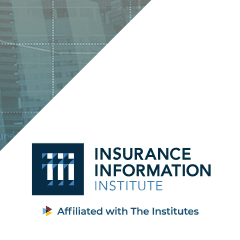
By Matthew Scarfone, Esq., Triple-I blog contributor, and shareholder at Colodny Fass
Florida presents property insurers with a unique set of factors that affect the availability and affordability of insurance coverage. The state boasts the third-largest population in America while simultaneously enduring a higher-than-average volume of natural disasters. It’s fair to say that operating a residential insurance company in the Sunshine State isn’t for the faint of heart.
What’s behind the mounting catastrophe in the Florida legal system?
But as damaging as the hurricanes can be, there is a man-made disaster that has contributed significantly to destabilizing the market to concerning levels: legal system abuse. In practice, some people are misusing tools of the justice system to manipulate outcomes and obtain windfalls. Insurance carriers have paid a heavy price in recent years due to the increased abuse of one-way attorney fees, bad faith claims, and other unsustainable litigation trends.
Exploitation of one-way attorney fees and bad faith law has been especially prevalent. Until recently, if a policyholder or third party sued an insurer and obtained any monetary award, they were entitled to recover all attorney fees incurred in the litigation. This practice may have incentivized people to dispute insurance claims, regardless of whether they were justified.
The problem was further exacerbated by the abuse of assignment of benefits (AOB) agreements, which created an opportunity for contractors to inflate costs. As a result, a modest homeowners insurance claim could lead to multiple lawsuits by different assignees, each asserting a separate claim for attorney fees. Manipulating this loophole encouraged excessive claims and unreasonable demands, forcing insurers to choose between paying the inflated bill or risking a lengthy trial where the attorney fees alone could exceed the claim amount. On top of that, courts have had broad discretion to apply fee multipliers and can award 1.5-3 times the reasonable attorney fee.
Cases involving allegations of bad faith further compound an insurer’s exposure because these cases can be costly to defend and involve intrusive discovery, amorphous damages, and unpredictable juries. Bad faith cases are not ripe (i.e., ready to potentially warrant judicial intervention) until there has been a final determination regarding coverage and the damage amount. Therefore, insurers regularly face the prospect of defending a bad faith case even after resolving the underlying dispute.
Florida’s courts did not help matters by ruling that appraisal awards—tools designed to help resolve disputes—could lay the procedural groundwork for bad faith actions. In other words, after resolving a claim through appraisal, insurers could still be left to defend a lawsuit for bad faith. Some attorneys used this caselaw as a playbook to fast-track claims into bad faith litigation by misusing the appraisal process.
The problem looks even worse when you quantify it. According to the Florida Office of Insurance Regulation (OIR), as of 2020, despite Florida only accounting for 9% of all homeowners insurance claims in the country, it accounted for 79% of all homeowner insurance litigation nationwide. Additionally, over the last decade, only 8% of the $51 billion paid out by insurers went to claimants, yet plaintiffs’ attorneys took home 71%. Meanwhile, eleven Florida property insurers fell into liquidation since 2017—five of those occurring last year alone.
Legislators recognized need for urgent action to help curb costs of insurance claims.
The Florida Legislature has responded to the growing crisis by passing multiple pieces of significant insurance reform, primarily tackling the problems with AOBs, bad faith claims, and excessive fees. For example, the new laws eliminate one-way attorney fees in property insurance litigation, forbids using appraisal awards to file a bad faith lawsuit, and prohibits vendors from taking AOBs under new policies. Despite criticism from the plaintiffs’ bar, these reforms are not all “one-sided.” Recently passed legislation also ensures transparency and efficiency in the claims process and encourages a more efficient and less costly alternative to litigation.
While it’s too soon to know exactly how recent reforms will improve the state’s insurance market, there is a sense of hope that these measures will decrease the volume of property insurance litigation and foster a more viable and stable residential insurance market that enables greater consumer access to affordable coverage.
It may take time for these reforms to have a measurable impact on Florida’s property insurance market. Still, insurers and policyholders alike should be optimistic that the market is headed in a more sustainable direction.











